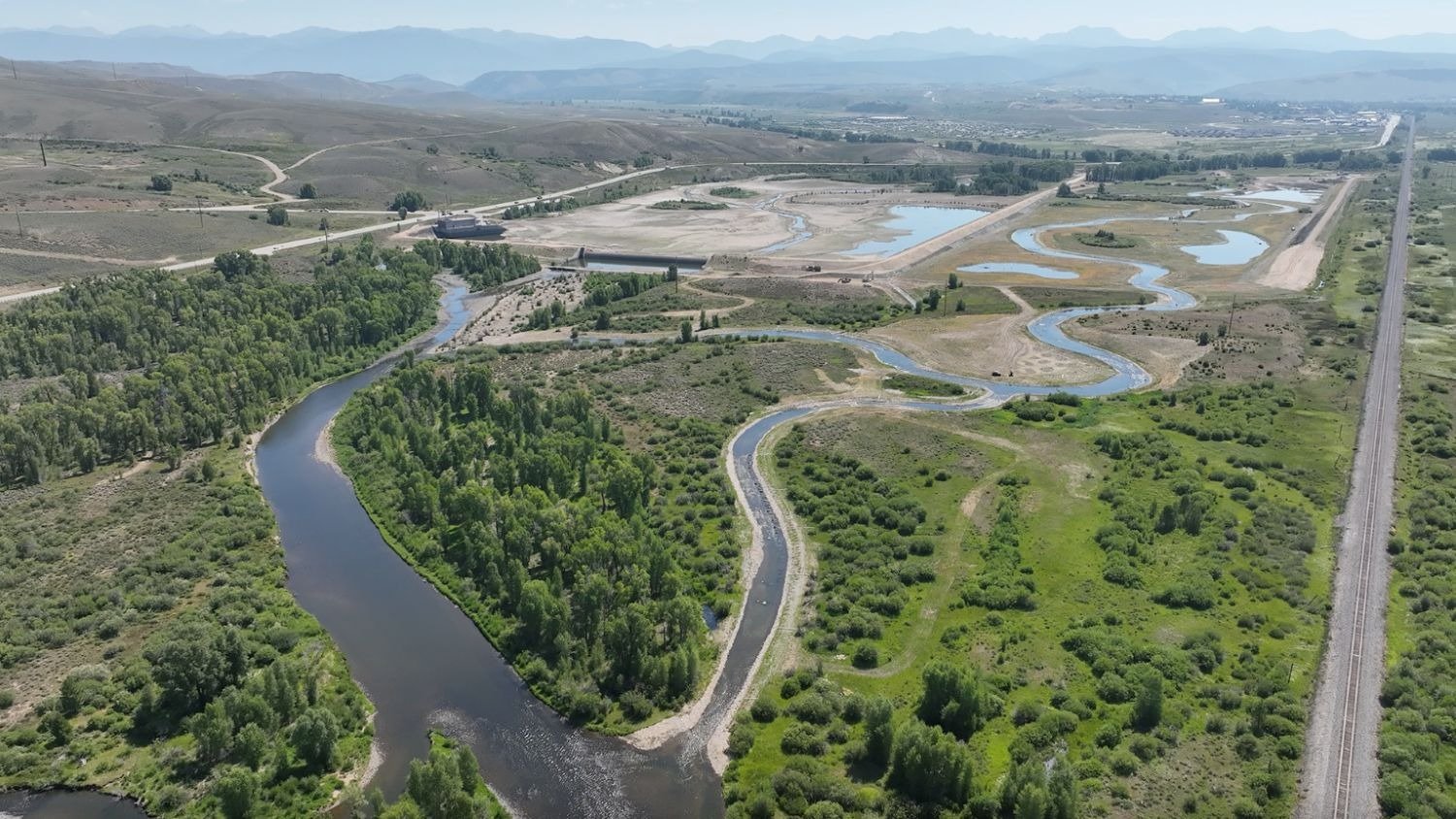“Scott Linn, president of the Headwaters Chapter of Colorado Trout Unlimited, said Trout Unlimited fully encourages that the EIS for both firming projects not be finalized until the county’s stream management plan is complete.”
http://www.grandcountynews.com/mondaydailytribune/mondaydailytribunestories.html#news1
This year’s snowpack is similar to last year — slightly below average and melting quickly, according to last week’s State of the River meeting in Granby, presented by the Colorado River District.
But compared to other watersheds in the state, the northern Colorado River basin is having a fairly good year, with reservoirs such as Green Mountain Reservoir, located near Kremmling, expected to fill by early July, and Wolford Reservoir, located just north of Kremmling, “spilling probably right now,” said Colorado River District Water Resources Engineer Don Meyer, who spoke at the meeting.
In fact, many reservoirs are expected to fill this spring. The South Platte River Basin, Denver Water’s primary water supply, is doing better than it has in at least 10 years, according to Marc Waage of Denver Water, who said the South Platte collection system is expected to fill soon. On the west side of the Continental Divide, Denver Water’s Williams Reservoir is 88-percent full, and Dillon Reservoir is 95-percent full, he added.
Gross Reservoir and Ralston Reservoir, two reservoirs off the Fraser System Operation on the east side of the mountains, are expected to fill “easily,” Waage said, which lessens the amount of water taken from the Fraser River this spring.
“We’re already limiting the amount of water we’re getting through the Moffat Tunnel,” Waage said. It is hoped that the extra spring runoff will help flush out some of the sediment that has been building along the Fraser River.
The only reservoir not expected to fill this year is Granby Reservoir. Asked if Granby would ever fill again, one official said, “It goes in cycles . . . We haven’t seen it (fill) in a while, but that doesn’t mean it won’t happen.”
While Tuesdays’ meeting was generally more positive than say, during a drought year, numerous graphs shown that night depicted an alarming trend: Less snowpack and quicker runoffs. This past winter’s snowpack was less than last year’s, and warmer temperatures were causing snowmelt to be about a week ahead of schedule.
Alan Martellaro of the Division of Water Resources said last winter was “decent” compared to 2002 and 2004. Lake Irene, located in Rocky Mountain National Park, was said to have below average snowpack, tracking close to last year’s, and its snowmelt progression was about a week and a half ahead of schedule in runoff.
Berthoud summit’s snowpack was a little less than the previous winter (although two winters ago it was slightly above average). Runoff was “a little ahead of schedule.”
Things are certainly different in the lower part of the basin, Martellaro added. In fact, the more south one goes in the state of Colorado, the worse it gets, due to the warm temperatures this spring and a below-average snowfall this past winter. Heavy demands are expected on Green Mountain Reservoir, for example, due to Western Colorado needs this year.
Updates on projects
A packed room of various water and environmental representatives and concerned citizens listened carefully as updates were given on the two upcoming firming projects.
One is the Windy Gap Firming Project, a project to “firm up” water rights that belong to the Municipal Subdistrict of the Northern Colorado Water Conservancy District (Northern). The subdistrict currently stores its water at Windy Gap, but due to insufficient storage space, it loses out on some of its water rights. A plan to build a new reservoir near Carter Lake on the Front Range would allow for more storage, and for the subdistrict to have access to 30,000 acre feet of water to be diverted to users on the Front Range.
A draft Environmental Impact Study (EIS) is to be completed sometime this fall by the Bureau of Reclamation (Reclamation). (The Windy Gap Firming Project would tie into the federally owned and managed Colorado-Big Thompson Project, therefore Reclamation is the lead agency on the EIS for this project.)
The draft EIS will give a chance for the public to respond and give feedback. Designs for the project, if approved, could start in 2012 or 2013.
Grand County representatives are concerned that the Windy Gap Firming Project will take more water out of the Colorado River and cause more shortages on the already-strained stretch below Windy Gap.
Last fall that concern became a major reality when Reclamation dropped its flows to 20 cubic feet per second (cfs) and Denver Water stopped releasing out of Williams Fork Reservoir; that combination caused flows to reach dangerously low levels, and ranchers were forced to stop irrigating their crops for fear of drying out the river completely.
Grand County commissioners are currently undertaking a stream management plan to study all the shortages and water rights in Grand County, and find a way for entities — mainly Northern, Denver Water and Reclamation — to work together so that everyone can have water without drying out sections of the river.
The plan incorporates a scientific approach by measuring and monitoring various sections of the Colorado River, the Fraser River, Vasquez Creek and other tributaries. The plan is currently going into its second phase, and is expected to be completed sometime in 2008.
Unfortunately for Grand County, the draft EIS for the Windy Gap Firming Project will most likely be completed before the stream management plan, even though many representatives of the county feel the stream management plan is an important component and should be incorporated into the EIS.
One resident in the audience asked if Northern would support and incorporate Grand County’s stream management plan into its EIS before it’s completed.
“I don’t know what the timing will be,” said Don Carlson, Northern’s deputy general manager. “ . . . Guess it would depend on what’s in it. We’re working with (the county). I think it’s a good idea they’re doing that. (But) we are obligated to our participants, so it would depend on how it would affect operations.”
The Moffat Firming Project, a project to develop 18,000 acre-feet of water per year for users in the Front Range, is also a major concern among Grand County citizens. The firming project would allow for more water to be taken from the Fraser River’s collection system during high-flow (spring) conditions. Many feel the health of the Fraser River, listed as the third most endangered river in the U.S., will further deteriorate if the firming project is approved. A draft EIS by the U.S. Corps of Engineers is expected to be completed early next year.
Population growth, a trend in warmer temperatures and a harsh reality check in 2002 — a drought year — are the driving forces behind the two firming projects proposed by Northern and Denver Water; if both projects are approved, the combined effect will most likely be devastating on Grand County’s already dwindling water supply. That is why many hope the Grand County Stream Management Plan will be taken into consideration in both projects.
Scott Linn, president of the Headwaters Chapter of Colorado Trout Unlimited, said Trout Unlimited fully encourages that the EIS for both firming projects not be finalized until the county’s stream management plan is complete.
“Trout Unlimited implores that the environmental impact statements not come out until the stream management plan is completed,” Linn said. “Fishing below Windy Gap is still very bad . . . the fish are suffering from low flows . . . Without coordinated bypass flows, otherwise known as a stream management plan, our river is going to die a slow choking death.”
Other updates
Linn added, however, that he was happy to hear about the temperature monitoring below Windy Gap, a section of the river prone to low flows, sedimentation and high temperatures. The Colorado River District installed 10 temperature gauges up and down a section of the Colorado River below Windy Gap. The gauges will give data on temperatures on real-time basis.
The county still faces major challenges, however, such as low flows on the Fraser River, and not enough water below Windy Gap to flush out the growing amount of sediment, Linn said.
Carlson gave some updates on local concerns such as Whirling Disease, a parasitic infection caused by a microscopic parasite that causes fish to swim in circles and eventually die, is essentially obsolete in the Windy Gap Reservoir.
Carlson also spoke about the draw down on Shadow Mountain Reservoir, which he said will “hopefully help water quality problems.” He added that it is being monitored closely in the next couple of years to see how successful it will be.
Tuesday’s State of the River meeting, an annual meeting put on by the Colorado River District, was generally positive this year. Two strong winters are helping replenish some badly needed water supplies, and various local projects — such as restoration projects along the river by Trout Unlimited, and a major watershed project led by Carolyn Schott — are making some positive headway toward maintaining the health of local fisheries and rivers.
But nobody in the room that night was lulled into a false sense of security. The threats to Grand County’s water supply are very real, and things are bound to start heating up once the draft EIS is completed for the Windy Gap Firming Project, expected this spring. Grand County commissioners are also pushing for the county’s stream management plan to be taken into consideration by all entities and held a meeting the following Thursday with representatives of Northern, Reclamation and Denver Water.
A story about that meeting will be printed in this week’s Manifest.








